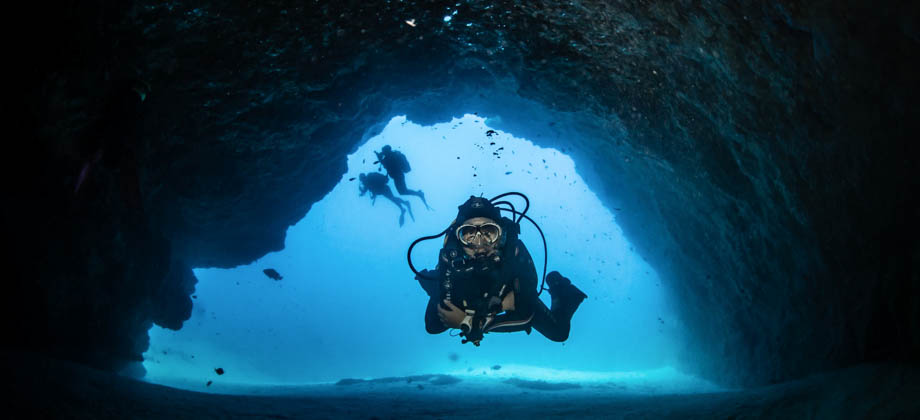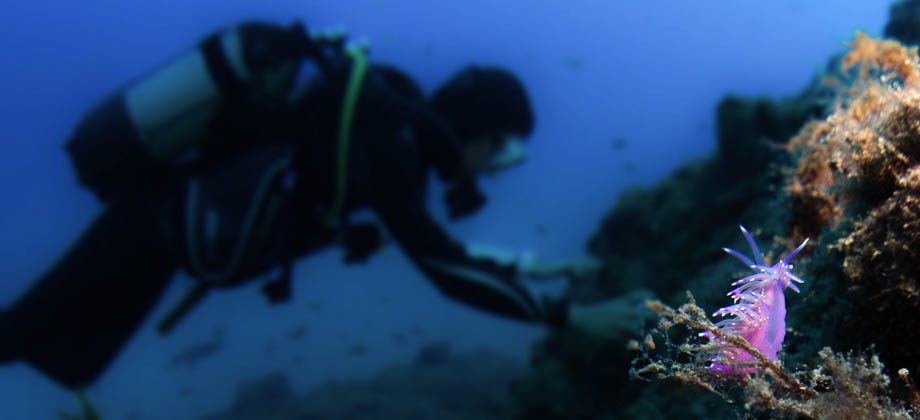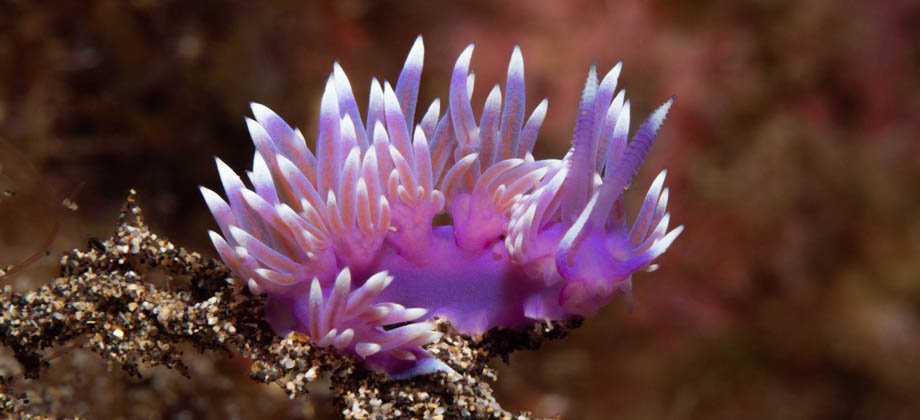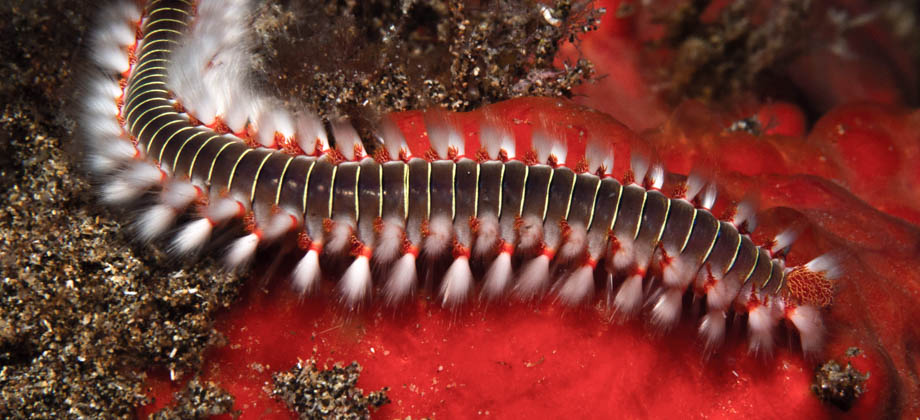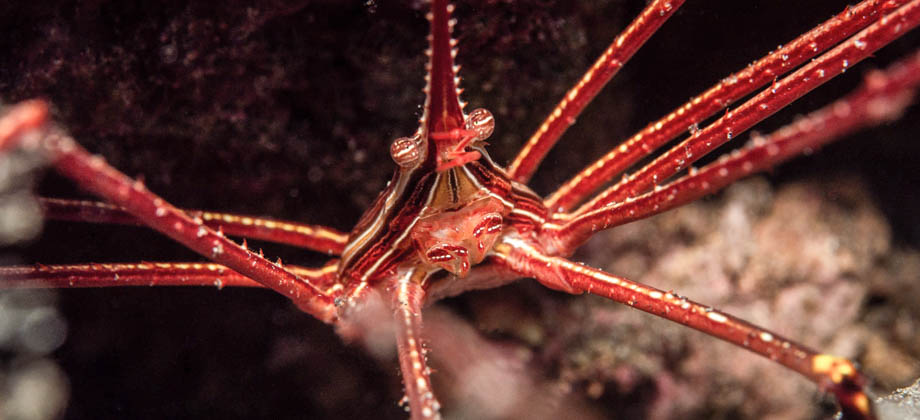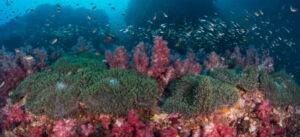Diving Lanzarote
Marine Life
As the Canary Current flows alongside the coast of Morocco, it draws cooler upwelled water from the coast on its way south, making the sea temperature around the Canary Islands somewhat lower than other locations around similar latitudes. This cooler upwelled coastal water also means that the water surrounding Lanzarote, the easternmost island, is cooler in comparison to the rest of the islands in the archipelago, with temperatures as low as 18 °C between winter and early spring and up to 24 °C between August and October.
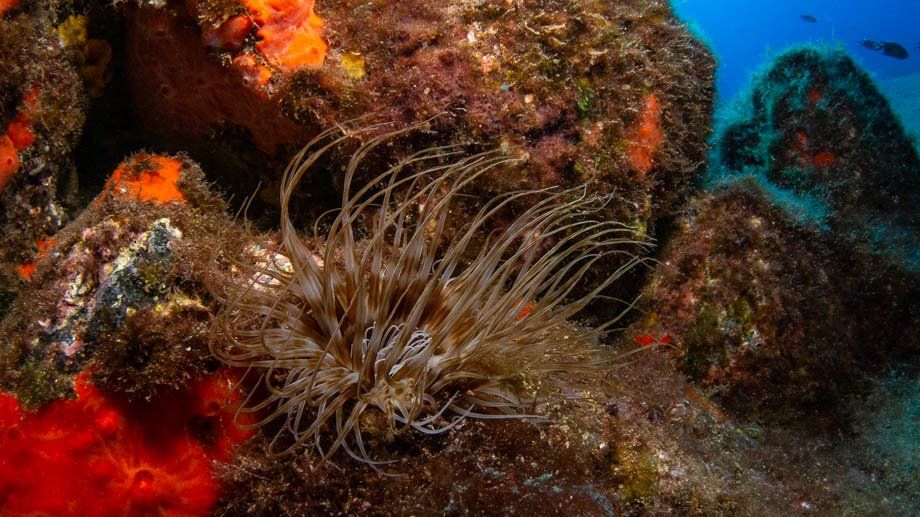 Tube-dwelling anemone (Family: Cerianthidae)
Tube-dwelling anemone (Family: Cerianthidae)
The Canary Islands are one of the only places in the world where angel sharks
(Squatina squatina) are still considered fairly abundant. These sharks are ambush predators that bury themselves in the sand while waiting for their prey to pass by. Angel sharks used to be frequently sighted around the coasts of Western Europe in the early 20th century, but since then, angel shark populations have decreased dramatically due to commercial fisheries. These sharks are especially vulnerable to fishing techniques that result in a large amount of bycatch such as bottom trawling or bottom longlines, as they are
benthic by nature and tend to have habitats that are close to coastlines. Their numbers have decreased so drastically that it is thought that there are fewer than a dozen angel sharks in
Irish waters. The IUCN has also classified the angel shark as Critically Endangered
.
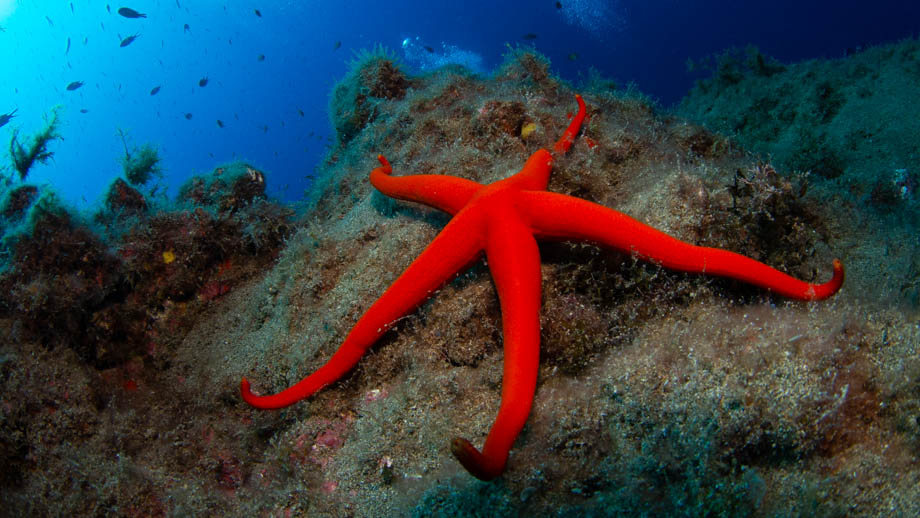 Canarian sea star (Narcissia canariensis)
Canarian sea star (Narcissia canariensis)
Aside from angel sharks, numerous other
benthic organisms (sometimes referred to as 'benthos') can be found buried in the shallow sand fields off the coast of Lanzarote. Wide-eyed flounders
(Bothus podas) and the European common cuttlefish
(Sepia officinalis), both also ambush predators, can be seen quite often. The latter has many hunting tools at its disposal, from spitting out water to reveal their prey that is buried in the sand, to rapidly shooting out a pair of long feeding tentacles that pulls their prey into its beak just before paralysing it with venom. As for their camouflage mastery, I wrote the following in my
Komodo Island post:
Cuttlefish seems to have perfected the art [of camouflage]. These voracious predators are able to observe their surroundings and not only change their colours accordingly, but are also able to manipulate sections of their skin called papillae in order to match the physical texture of the surface that they are imitating. These changes of colour are not only used for the purpose of camouflage when hiding or sneaking up on prey, but also to mesmerise their prey when the colours are flashed repeatedly. Male cuttlefish have also been observed imitating females to increase their chances of mating!
 A European common cuttlefish (Sepia officinalis) waiting for its prey. Even the texture of its skin has been changed to blend into the sand.
A European common cuttlefish (Sepia officinalis) waiting for its prey. Even the texture of its skin has been changed to blend into the sand.
Other
benthic organisms that are frequently seen, albeit not buried under the sand, are short-snouted seahorses
(Hippocampus hippocampus), diamond lizardfish
(Synodus synodus), and striped red mullets
(Mullus surmuletus). Mullets are a type of goatfish, a name that was derived from the characteristic whiskers of goats, as goatfish have
chemosensory organs called 'chin barbels' that are used to probe the sand when they hunt for their prey. Scorpionfish, such as the Madeira rockfish
(Scorpaena maderensis), can also sometimes be spotted camouflaged amongst the rocks. Like cuttlefish, scorpionfish are masters of camouflage. Their modus operandi is very different however, as their sedentary nature can quite often cause algae or hydroids to grow on their skin. These growths, along with the mottled colourings and skin flaps or 'tassels', sometime even end up luring their prey towards them!
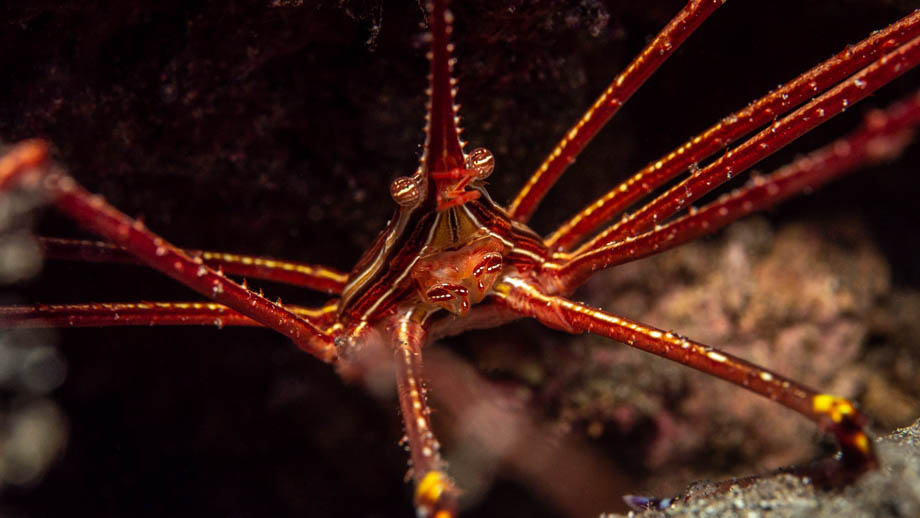 Arrow crab (Stenorhynchus lanceolatus)
Arrow crab (Stenorhynchus lanceolatus)





